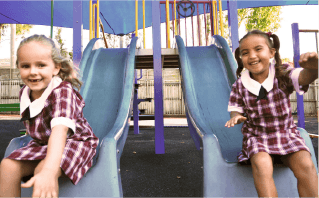
Anger can be a powerful emotion that motivates us to take action. But unfortunately, it can also lead to destructive behaviour if not managed effectively. If you’re concerned that your angry child is destroying your home, it’s essential to understand the causes and effects of this behaviour and how to address it. This article will provide tips for parents on how to help their children healthily manage anger.
Why Is Your Child Destroying Your Home?
Most kids destroy property or break things as a way of coping. This is because they cannot healthy cope with their frustrations and extreme feelings, and destroying property is a release. It makes them feel better, if only for a while.
The lack of alternative coping mechanisms is prevalent in children with ADHD, Oppositional Defiant Disorder (ODD), Asperger’s Syndrome, or a mood disorder. That is why it is vital to seek professional advice to find out if there are any underlining issues.
Low Frustration Tolerance
Sometimes destructive behaviour serves a different purpose: intimidation. For example, a child may learn that by breaking things, punching holes in the wall, and behaving violently, they can frighten a parent into doing what they want. Please note that the need to intimidate doesn’t come from the desire to be manipulative. Instead, it comes from feeling disempowered and out of control.
If you put yourself in a child’s shoes, you will see that adults around them make most of the decisions. They decide where the child is going for the day (school, grandma’s house, daycare), what time to wake up, what to eat and many other things. While adults make these decisions because they are responsible for the child’s wellbeing, the child experiences it as powerlessness.
Home is a Safe Space to Let it Out
When a child has a negative feeling about their day, they won’t share that with someone they don’t know. Instead, they will share it with someone with whom they feel safe. However, because the child can’t express their feelings with language, they use destructive behaviour instead.
What to Do in an Outburst?
Remove the child from the location, take the child somewhere safe where they cannot destroy someone else’s property, and give them an alternative outlet for their anger, such as a pillow and wait for the outburst to fade away.
You could say: “I won’t let you punch the wall or break the toys. You can punch this (hand the alternative object) instead. I will stay with you while we wait for this feeling to pass. I love you.”
Notice: In the dialogue above, you give the child who feels disempowered a choice. That gives some power back to the child. Respect the child’s decision; only intervene if you believe the child is unsafe.
That is all you need to say. Don’t try to “fix” the behaviour or teach your child a lesson while they are in distress. Your child’s brain is too busy with uncomfortable feelings to learn anything. Attempting to correct the behaviour in the moment will make the situation worse.
What to Do After the Child Calms Down
Once the child calm’s down, you can discuss the matter. You must also wait until you are calm. You can’t teach coping mechanisms if you can’t cope with your own feelings.
You could calmly say: “I love you, AND I don’t accept breaking things in our house. How can we express these feelings better? When I feel (angry, sad, frustrated, or disappointed), I like to do this (talk to someone, take deep breaths, go for a walk). What are some things you could do instead of breaking things?”
If the child can’t think of alternative behaviours, you could suggest something you know they enjoy doing.
Notice: In the statement above, I used AND instead of BUT. “BUT” puts a condition on your love. For example, mum/Dad loves me, BUT they will only love me IF I do things the way they want. “AND” makes them feel like you love them despite the behaviour.
Ongoing Coping Mechanisms Strategies
Most children find it challenging to deal with emotions; they are not born with a coping mechanism. Therefore, they need to learn it.
Increase Your Child’s Emotional Vocabulary
Ask your child to name what they are feeling throughout the day. Start with simple words like sad, happy, angry and expand to less basic ones such as mad, frustrated, disappointed, excited, joyful, peaceful etc.
If they can name and verbalise the emotions, they are more likely to use language to express it instead of disruptive behaviours.
Mindfulness
Mindfulness practice can rewire the brain to a calmer state. For example, practising mindfulness for as little as 3 minutes a day (when we are not having negative feelings) can guide the brain to a calm state quicker when we are in distress.
Practising mindful breaths before bed could be a simple way to incorporate mindfulness into your child’s daily routine.
Empower Your Child to Make Choices
When appropriate, encourage your child to make choices. It could be as simple as what to wear or what to eat. Having some control over their life gives them a sense of power and reduces the feeling of helplessness.
You can also give your child a choice of how to deal with their anger. For example, “Do you want to scream in the pillow or take some deep breaths?” The more practice they have constructively dealing with anger, the better they will become at it.
Have an Anger Management Plan
Create an anger management plan and put it on the fridge or somewhere visible. This strategy can be challenging, because most people misuse it.
Having an anger management plan stuck to your fridge doesn’t mean that you will pick your sheet and ask your child to choose what strategy to use in the middle of an outburst. Have you ever made a good decision when you were filled with negative emotions?
Having the plan visible is a constant reminder to the child that alternative behaviours exist. Therefore, you should talk about the plan and remind your child about the desired strategies while they are calm.
Role Play Anger
Modelling is one of the most powerful ways to teach children. When your child sees you managing anger in a constructive and healthy way, they are more likely to learn how to do the same.
You can role-play different anger scenarios with your child and help them find the best way to deal with it.
Consider your child’s anger triggers and come up with a few anger scenarios. For example, you could act out a scenario where someone cuts in front of you in line or where you don’t get picked for the team.
Let your child try out different anger management strategies and see what works best for them. This is a great way to teach children about anger without feeling like they are being lectured.
Give Them Time to Cool Off
Sometimes, the best anger management strategy is to walk away from the situation. This is especially true for children.
When emotions run high, it is difficult to think clearly and make rational decisions. Therefore, it is best to remove yourself from the situation and take some time to cool off.
This doesn’t mean you should leave your child alone to deal with their anger. On the contrary, you should still be there to support them. But give them some space to calm down before discussing the situation.
Encourage Physical Exercise
Physical exercise is a great way to release anger and frustration and a healthy outlet for anger.
Encourage your child to find a physical activity they enjoy and ensure they have time for it daily. This could be something as simple as a daily walk or playing catch in the backyard.
Regular physical exercise will help your child manage anger healthily and could even prevent outbursts from happening.
We’ve created a free printable activity for parents called The Anger Volcano. This activity will help kids understand, express and healthily manage their feelings. Click here to download it now. And remember, practice makes progress! With time and patience, you can help your child learn how to manage their anger constructively.
Related Articles
How to help your child cope with anger
7 Anger Management Strategies for Children
How to Improve Self-regulation in Children with Autism and Attention Disorders




